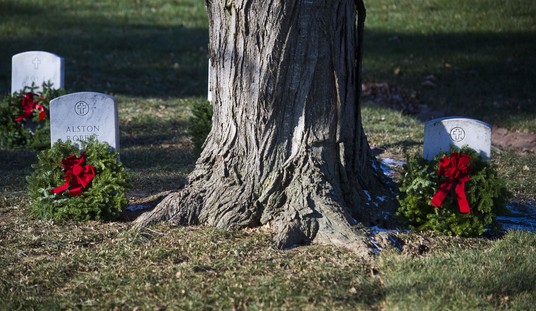
The RedState Department of History takes time out today to pay tribute to one of the greatest feats of endurance in human history.
On this date in 1944, the citizens of Leningrad celebrated the end of the German siege of that city in World War II — broken the preceding day after 872 days of bombardment, starvation and privation which cost an estimated 600,000 civilian lives.
The siege began in 1941 as German forces moved north. A defensive perimeter was established, but many of the old Tsarist palaces of St. Petersburg lay outside the defensive ring. As a result, these palaces were looted by the Germans, with many valuable items including artwork taken to Germany.
The general disorganization affecting the Red Army in the summer of 1941 was not helpful in Leningrad’s defense, with the ring closing on September 8, 1941. From that point forward, the Germans launched millions of shells, bombs and even torpedoes into the city to reduce the defenders.
The winter of 1941-42 was especially horrific for the defenders, who had little access to food and hundreds of thousands of civilians caught in the crossfire. During the winter, it’s estimated that 100,000 civilians per month lost their lives due to cold and starvation. The average daily ration of bread during that winter was 125 grams per person, with approximately 50 percent of the mixture made up of sawdust and other inedible items.
Civilians ate soap, wallpaper paste and sometimes, even each other. The Soviet secret police arrested over 2,000 people that winter for cannibalism – according to records not released until 2004. Many of the offenders were unsupported women and as such could be granted clemency in court, especially since very few of these sad cases involved murder. But with hundreds of thousands of corpses in the streets some people, sadly, had no other option.
Also common was murder for ration books, with over 1,200 such killings taking place in the first six months of 1942.
Author M.T. Anderson wrote of the winter using these words:
“Gradually, like the emigration of an insidious, phantom population, Leningrad belonged more to the dead than to the living. The dead watched over streets and sat in snow-swamped buses. Whole apartment buildings were tenanted by them, where in broken rooms, dead families sat waiting at tables. Their dominion spread room by room, like lights going out in evening.”
During the winter, however, the civil authorities built an ice road across Lake Ladoga, which served as the only connection between Leningrad and the mainland. It was named both the “Road of Life” for its ability to bring in food and remove civilians, and the “Road of Death” for the exceptional danger involved in crossing it in the face of German air attacks.
In 1942, the Soviets made three separate attempts to break the siege, all of which were defeated by the Germans — who utilized a Spanish volunteer division, known as Division Azul, or “The Blue Division” to help with the siege. By this time, the Germans were bombarding Leningrad with 1,800-pound railway artillery shells.
The winter of 1943 finally saw the Soviets break the full blockade. Operation Iskra broke the land ring around the city and drove a land corridor between Leningrad and the mainland, but the siege itself was not broken until this date in the following year, 1944.
But before leaving, the Germans finished the work of looting and destroying the old Tsarist palaces including Catherine Palace, Peterhof Palace, the Gatchina Palace and the Strelna Palace. One of the happier stories of the siege can be related in the fact that the Soviet government allowed restoration work on all the palaces to begin almost immediately after the war’s end, with these and other Tsarist palaces open for public viewing today.
But in the end, the toll of the siege of Leningrad was tremendous. Soviet losses included over 1,000,000 battle casualties including captured and missing, and over 2,000,000 wounded and diseased. Over 600,000 civilians died, giving a total of over 4,000,000 Soviet casualties — the deadliest siege in human history. The Germans and their allies also lost nearly 600,000 killed and wounded in combat.
The Soviet battle casualty total roughly equals the total number of American casualties incurred during the entirety of World War II — a truly staggering figure. In this context, the Soviets’ name for the conflict as the “Great Patriotic War” can hardly be denied.
Enjoy today’s open thread!














Join the conversation as a VIP Member